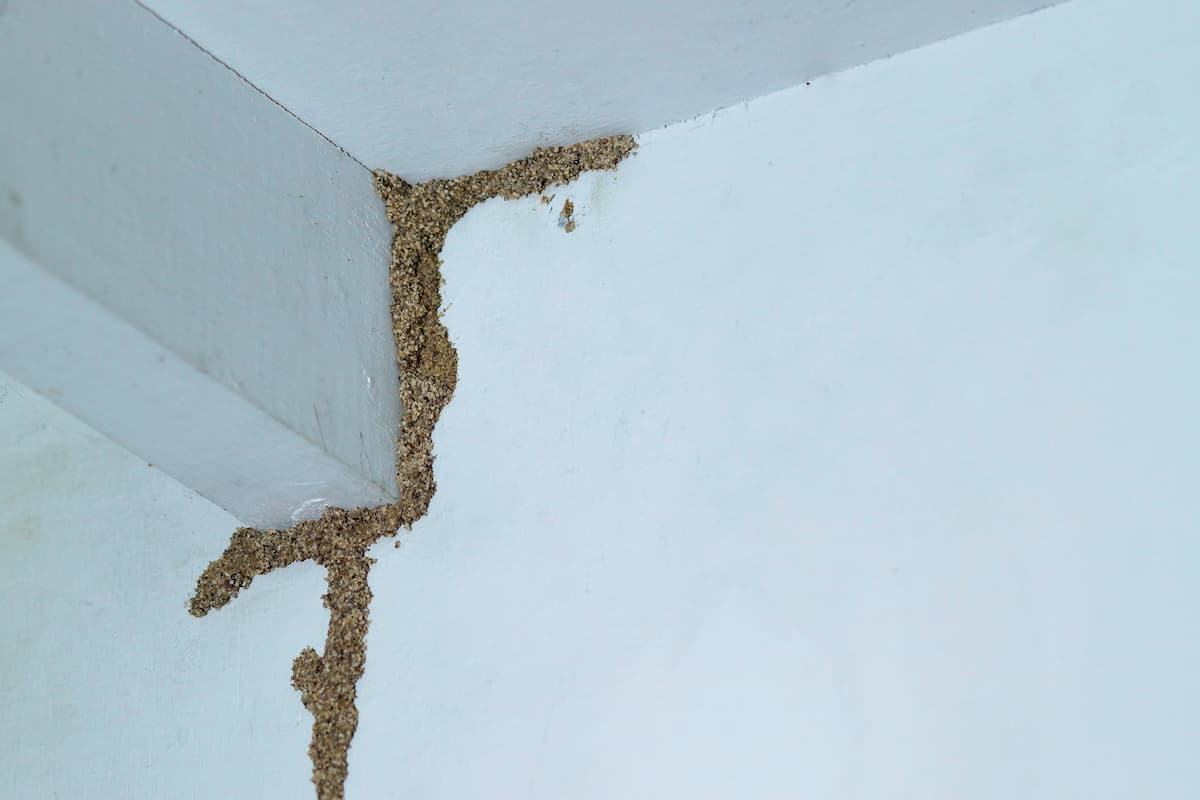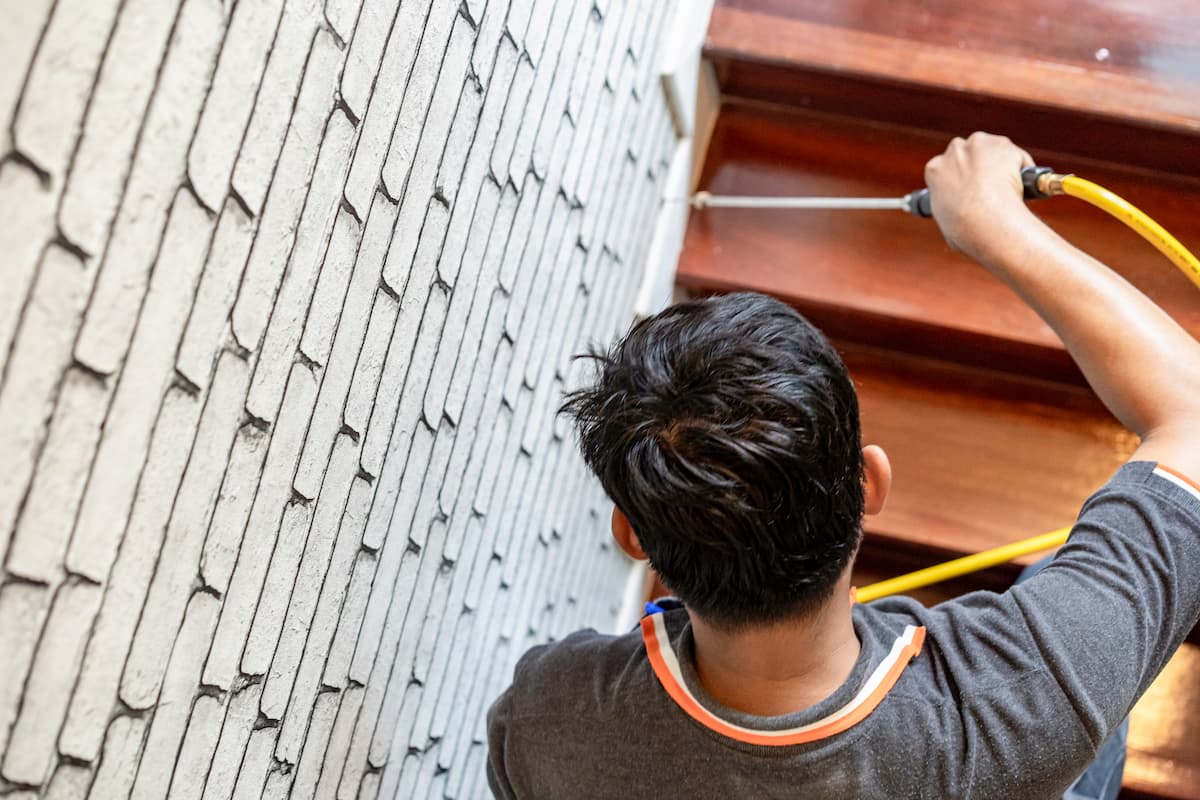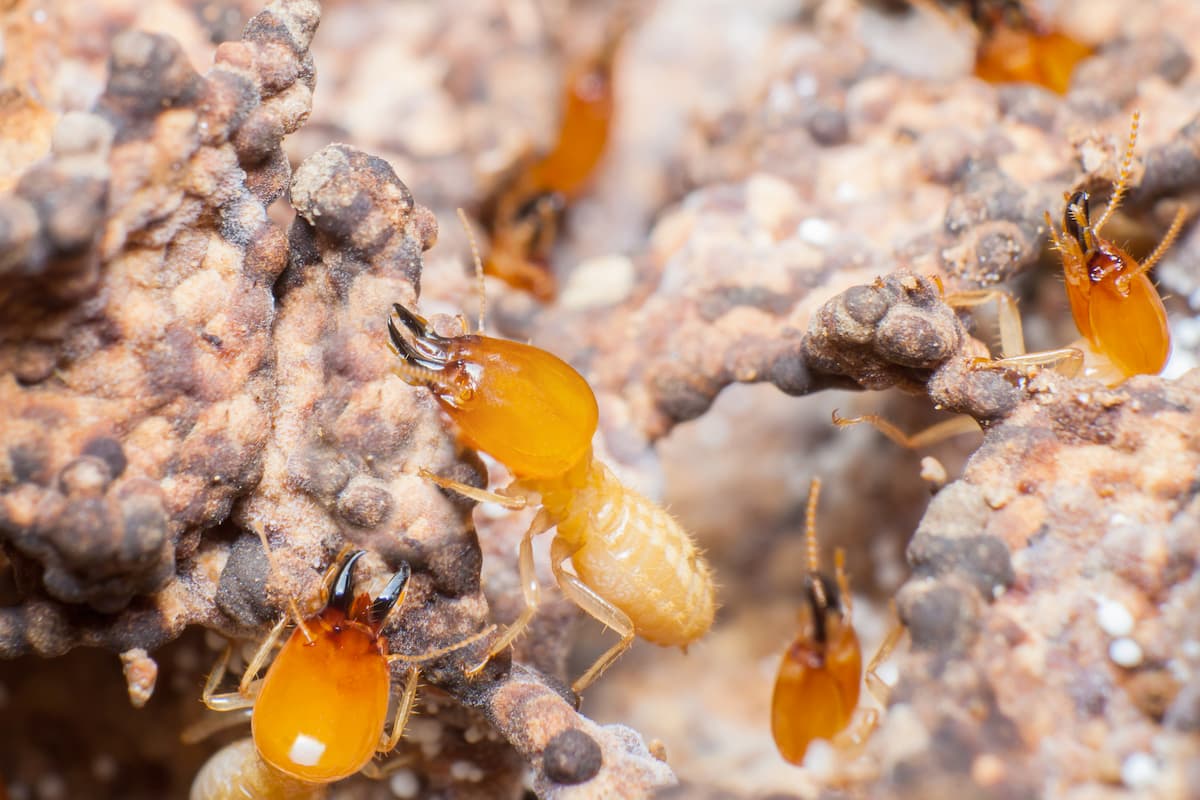Can You Get Termites in a New House?
If you are buying or building a brand new house, you might be wondering whether you need to worry about termites straight away or if this is a problem to address later.
You can get termites in a new house, as these insects will attack any untreated wood they find. It doesn’t matter if this wood is new or not. If your home has been built using wood in the supports, it is vulnerable to termites, regardless of age.
This article will look at what termites eat, why they are dangerous to homes, and what can be done to protect new houses from termite damage.
By the end, you should know the risks and how to reduce these!
Why are Termites Dangerous to Homes?

Termites might not sound like a threatening pest to have, as they rarely bite humans and lack poison and stingers. However, they can be a severe problem if they get into the fabric of your home, as they will cause extensive damage, including:
- Eating away at wooden supports, such as ceiling beams and door and window frames
- Eating wooden flooring and robbing it of its strength
- Destroying wallpaper
- Introducing dampness and mold to the home
- Causing walls and ceilings to buckle and collapse
- Causing paint and wood to blister
These symptoms will probably be slower to show up in a new home, where the fabrics are all new and have no existing damage.
However, they will still show up, just as they would in an old home, and they might be even more devastating because the materials are so new, and it’s frustrating to have them ruined.
Termites will feed on the wood of any description, and a large colony of termites could eat as much as 11 pounds of wood in a month.
This will quickly cause significant destruction in your home, so it’s something to look out for if your new home incorporates wood and you live in a part of the world where termites are active.
Do Termites Prefer Old Homes or New Homes?
Termites can attack old homes or new homes without discrimination, and they are a problem that you should be on the lookout for no matter what age your home is.
Some people think termites are more likely to go unnoticed in an old home, which is valid to an extent.
In an old home, if a window or door starts sticking, this is more likely to be blamed on general aging and wear and tear, while it might be noticed and investigated in a new home.
There is also a higher chance that termites can access an old home because there might be more gaps in the support structures, allowing them to get into the wood. However, in terms of their preference, there is no difference between old and new homes.
If the termites can get into your new home, they will feast on the wood just as readily as they would in an old house.
New wood is not unappealing to them, and it is just as easy for them to start eating a new home as it is for them to start eating an old house.
There is a higher chance of finding termites in an old home because there is more time for them to have colonized. So, if you are buying a home, consider this a risk.
However, new homes are not at risk of getting termites in them, and if you build or buy a new home, termite protection should be at the forefront of your mind to prevent problems before they occur.
How Can Homes be Protected from Termite Damage?

Many new homes have treated wood to protect the wood from termites.
Treated wood can also be in old homes, but it is increasingly becoming a feature of new builds because the problems that termites cause are so widely recognized.
It is prevalent for structural woods to be treated as termite-resistant now, meaning that if termites get into your building, they are less likely to make it structurally unsafe.
An older home may not have these protections, and it can be harder to apply them retroactively because the structural parts of the house are usually behind plaster.
If you are building your own home, you should certainly consider using treated wood for your structural supports at the very least because this will minimize the risk of the termites doing significant damage if you end up with an infestation.
You can also take other measures to minimize the risk of termites in a new build.
These include ensuring moisture cannot build up in the home by directing drains away from the house and ensuring they are always kept clear.
You might also choose to use materials other than wood for important structures in your home, or to use only a tiny amount of wood overall, as this will reduce the risk of major termite infestations.
Should You Check for Termites when Buying a New Home?
Although it is unlikely that a brand new build will have a termite infestation, it can still be a good idea to include this check in your pre-purchase inspections.
It may prove unnecessary, but because termites can be so damaging, making sure they are not there at the time of purchase is often worth the small extra cost that this incurs.
It will give you peace of mind and may prevent you from making a wrong purchasing decision if termites somehow end up in the house shortly after the build has been completed.
Overall, you should inspect the house before purchasing, as the price to fix a termite infestation is equally expensive.
If you know that there are no termites when you move in, you can then keep an eye out for any changes that might signify their arrival, and this could save you a lot of money and trouble in the long term.
What Should You Do if You Get Termites in Your New Home?

If you get termites in your new home, the first thing that you should do is call a professional pest control firm.
Do not try to remove termite infestations yourself; this is difficult and often impossible for an inexperienced homeowner. However, if you fail to do it effectively, the consequences could be severe.
Termites can wreak devastation on a building in very little time, and the last thing you want to do in your brand new home is stripped out and redecorate large portions of the interior.
Conclusion
If you are building or buying a new house, you should consider termites and make sure you are doing the appropriate checks for them, mainly if the house contains a lot of wood. Find out if the property uses treated lumber (or use this yourself), and get experts to look for any signs of termite infestations.
